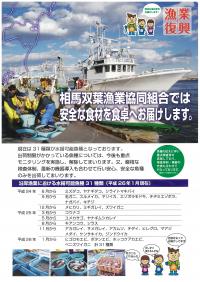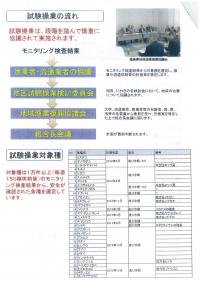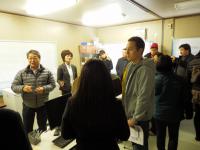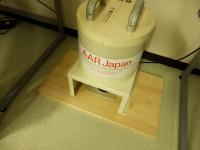HAMA02(Soma City):Soma Journey!No.2(Hama, Naka, Aizu!)
The Soma-Futaba fisheries cooperative association Due to the Nuclear Power Plant Accident, The Fukushima fishing industry was forced to place a voluntary ban on fishing along the coast, including trawl fishery. During these circumstances, there are types of fish that have been designated safe based on over 10, 000 results produced from monitoring inspections. Trial fishing has been carried out(including small scale sales, and investigating sales amounts at particular outlets) limited to fish that have been determined safe, and as of the 31st of January 31 types of fish are the target of such fishing. Of course all fish caught are tested for radioactive materials before being put on sale. According to association personnel, depending on the type of fish and its habitat, there has been a large difference in test results. For example deep sea fish such as octopi and squid have a physical make up that means they discharge radioactive materials easier and currently very little radioactive materials have been detected in them. Here I’d like to provide an answer for those who ask the questions ‘why is it necessary to resume fishing operations in the first place?’ The recovery of the fishing industry has a direct connection with not only the livelihoods of fishermen, but a great number of workers related to the industry, including those who help distribute fish, work in markets, and processing plants. The recovery of the fishing industry is necessary for the recovery of Soma. ‘I want the day where jobanmon(A type of fish caught off the coast of Fukushima) can be sold at the Tsukiji fish market in Tokyo as it used to be, to come as soon as possible.’ These words provided us with a brief glimpse of the fishing industry’s recovery.
|




